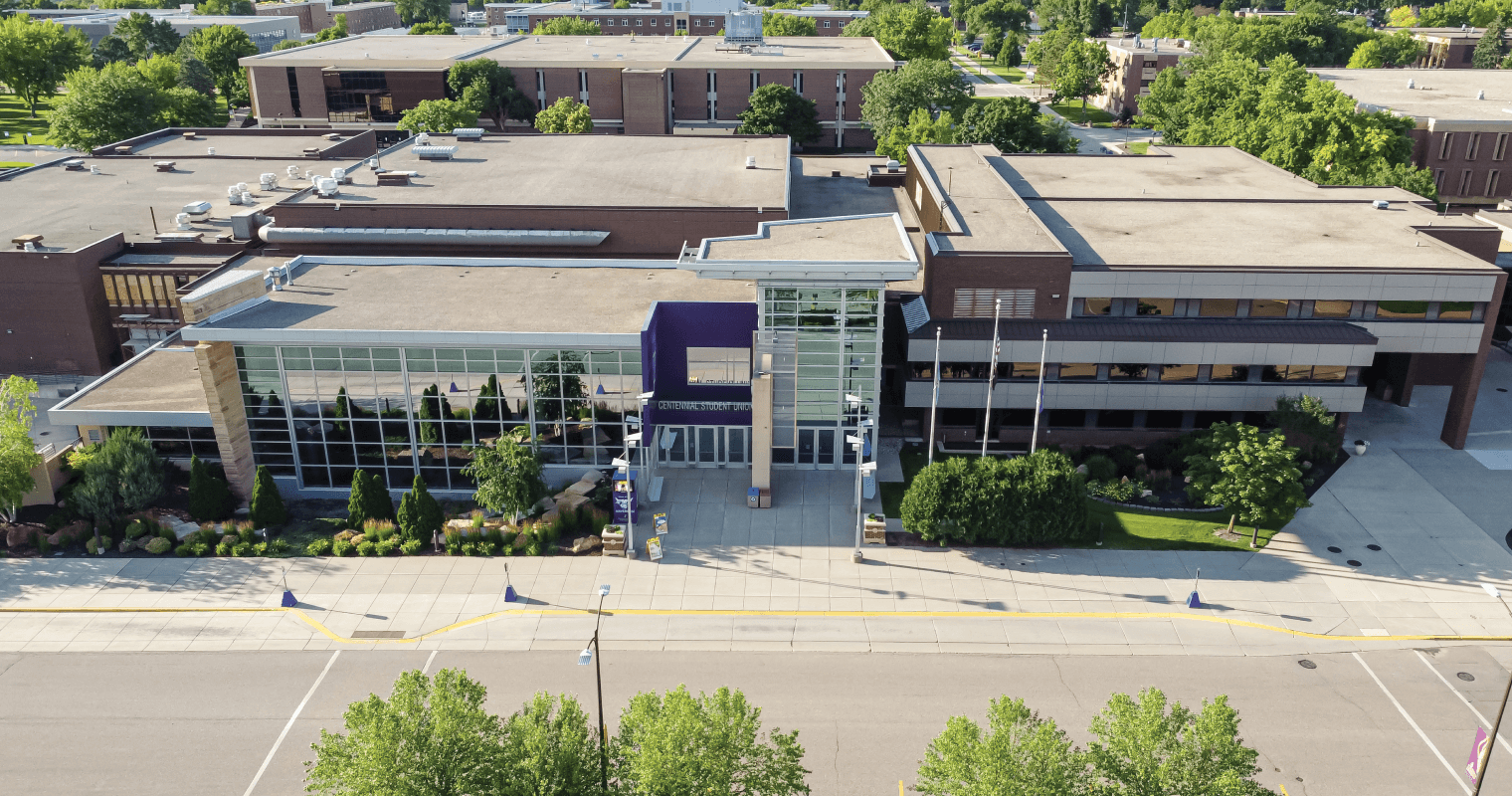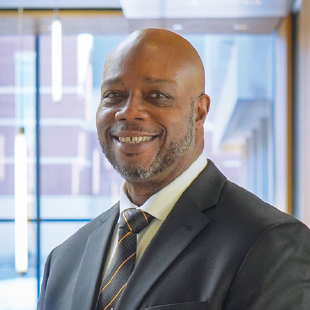A Conductor of Partnerships: Dr. Tom Nevill on Innovation and Apprenticeships at GateWay Community College
Located in the metropolis of Phoenix, Arizona, GateWay Community College is at the center of both growing industries and a growing population.


Dr. Jesse Mason, Associate Vice Chancellor for Academic Affairs at Minnesota State, embodies the transformative power of higher education. As the first in five generations of his family to graduate both high school and earn a college degree, his personal journey fuels a deep-seated passion for students and serving the community. His experience, combined with a career spanning faculty roles, deanships, and provost positions, now informs his leadership at the system level in Minnesota. Dr. Mason shares his insight into what it means to work in a system office, how we can center our work on the needs of our communities, and transformational initiatives in the works at Minnesota State.
For many on campus, the work of a system office can seem abstract. However, Dr. Mason explains that the system level Office of Academic Affairs serves as a key hub for operational leadership and coordination. The Office of Academic Affairs at Minnesota State oversees a wide variety of areas, including dual enrollment, academic program approvals, transfer agreements, career and technical program support, and collaboration with accrediting agencies.
Beyond day-to-day operations, Dr. Mason’s office also supports new initiatives, staff training, and legislative work. For example, Minnesota State is focused on creating pathways for adult learners, including new immigrants, to help them achieve their educational and career aspirations. Additionally, Dr. Mason’s team is dedicated to training administrators to better support faculty and staff. Dr. Mason also works closely with the legislature and Board of Trustees on large-scale projects such as general education redesign and developmental education reform.
While coordinating this work across 33 different colleges and universities can be challenging, Dr. Mason notes that a shared mission helps bring everyone together. “When you have 33 colleges and universities and 54 different communities, of course there are varying perspectives. But one thing that we align on is student success and the importance of not only getting them in the door, but what do we do with them when they come in the door,” he shares. This shared commitment drives initiatives like their Equity 2030 plan and the academic and student affairs framework centered around guided learning pathways.
When asked about advice for implementing effective pathways, Dr. Mason emphasizes that we need to focus on the communities being served. He believes higher education institutions have a responsibility to inspect how we’re serving students, communities, employers, and the state ecosystem. He advises that institutions need to make sure that “what we offer truly is serving and progressing the communities that we are in. We’re not just in there to take from or just to recruit from. We’re giving back, and what we’re giving back is a workforce that will lead to increased revenue and infrastructure for those states and the communities. This will make them much more viable for new citizens who come in or new companies who may want to come into our states, knowing that they have an educated workforce that they can choose from.”
This philosophy extends to working with the collective community behind each student. Drawing from his own background, Dr. Mason states, “I come from a generation that was more collectivistic than individualistic. My success was seen as success for the whole community or for the whole family.” He highlights the importance of understanding the family and community involvement in students’ educational decisions, particularly for groups like Latino students or those entering from the foster system. “That’s why it’s much more than just the curriculum that we offer, but that relationship with the community. It’s also creating space within the institution where students can identify themselves culturally and identify themselves from an individualistic standpoint.”
When asked about some of the important initiatives Minnesota State is currently working on to serve communities across the state, Dr. Mason shared two different programs driving an outsized impact. While institutions across the state have been engaged in prison education for many years, it became a priority at the state level when Governor Tim Walz was elected in 2018. Dr. Mason is a champion of these efforts and notes that “we all know that in order to make sure that the workforce needs of the state and the country are met, we have to go beyond just our traditional pathways to workforce.”
Prison education programs promote a number of positive outcomes beyond just GEDs and degrees. Dr. Mason notes that such programs “lead to reduction in recidivism and allow them to make a living wage and create new family dynamics for themselves.” Minnesota State institutions offer “the curriculum both on the liberal arts side and the career tech side to a number of our state institutions to allow students to either earn the credentials while they’re incarcerated, or plan as they transition out of those facilities to find a safe place at one of our institutions.”
Equally important, Minnesota State is focused on how we can prepare the next generation of teachers. While many students have a passion to enter into the K-12 teaching profession, it isn’t always easy to get there. For example, students often have to quit their jobs in order to complete the required student teaching. To address this financial burden, Dr. Mason is proud that Minnesota State played a role in a stipend pilot. “If they have to quit their job, they know that they’ll be taken care of during their last semester to meet their teaching credentials.” He believes “those kinds of things have been life-changing for many of our students who want to be educators.”
As workforce and community needs evolve, so too are the educational offerings at colleges and universities. However, navigating the landscape of non-degree credentials and micro-credentials can be overwhelming for students and institutions alike. To better understand this complex environment, Dr. Mason shares that Minnesota State has “a working group who will soon be bringing recommendations around micro-credentialing and badging.” He hopes this work will build off of their existing “credit for prior learning network,” which over half of Minnesota State institutions participate in. This network is designed to recognize learning acquired through military service or other training and help students get to their credential faster.
This work reinforces the idea of stackable credentials, recognizing that many students attend part-time with the goal to earn credentials that lead to living-wage jobs throughout their educational journey. In developing these new frameworks, Minnesota State is actively working with and learning from other states to avoid common pitfalls. “For us, it is trying to avoid the mistake of not having parameters early, because sometimes... we rush to implement things without really thinking about what the parameters are and what the standards are for accountability and quality,” Dr. Mason cautions. This collaborative effort also extends to working with other state entities and private partners to ensure credentials meet employer needs and adapt to changing workforce demands.
For academic administrators aspiring to system-level leadership, Dr. Mason offers advice rooted in his own career journey. He stresses the importance of gaining practical skills like budgeting and strategic planning. He also emphasizes the need to truly understand the experiences of those on the ground: “What I wanted to do is understand the people who I’ll be serving and what they are experiencing on the ground.”
This work is just as important to a faculty member as it is to a top-level administrator. For example, Dr. Mason emphasizes building relationships. “I took the first day of class when I was teaching very seriously,” he shares. “I want to know ‘What’s your interest? What’s your background? What’s your intended major?’ because I want to use those in the examples in my own pedagogy when I teach.” This micro-level engagement fosters a sense of belonging and helps students see themselves reflected in their learning.
Aside from understanding your constituents, Dr. Mason advises: “The main lesson is to learn from your peers. Do a deep dive in trying to understand and admit when you don’t understand, because that creates the opportunity for learning.” As such, he believes these positions demand a dedication to lifelong learning, openness to new experiences, and a willingness to accept critique. “These positions are not about ego. It’s about learning and doing better as you learn. I’ve learned that people are forgiving of mistakes when you’re willing to learn and admit that you’ve made a mistake.” This thoughtful approach, rooted in curiosity and continuous self-improvement, is essential for those seeking to be effective leaders, community champions, and student advocates.